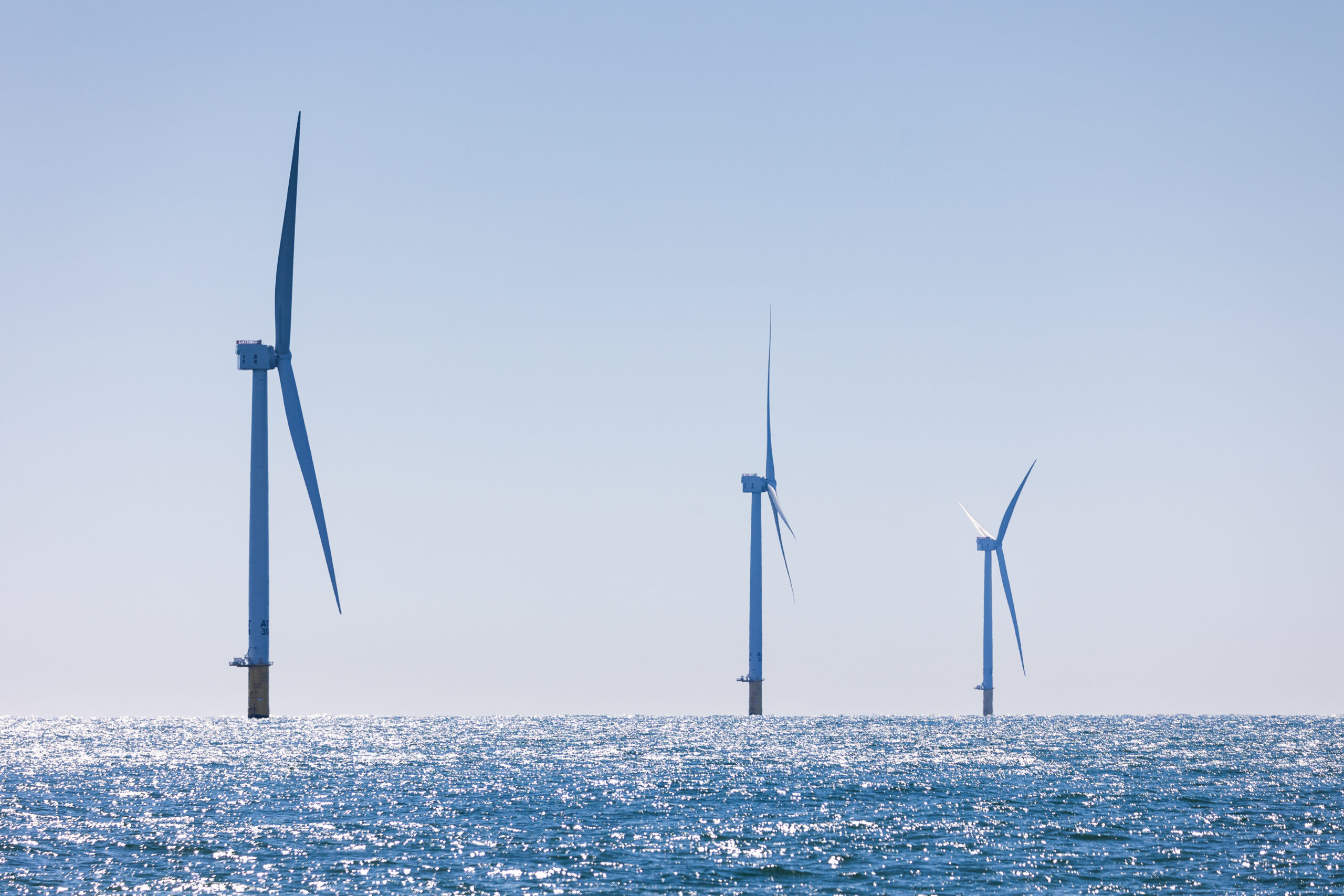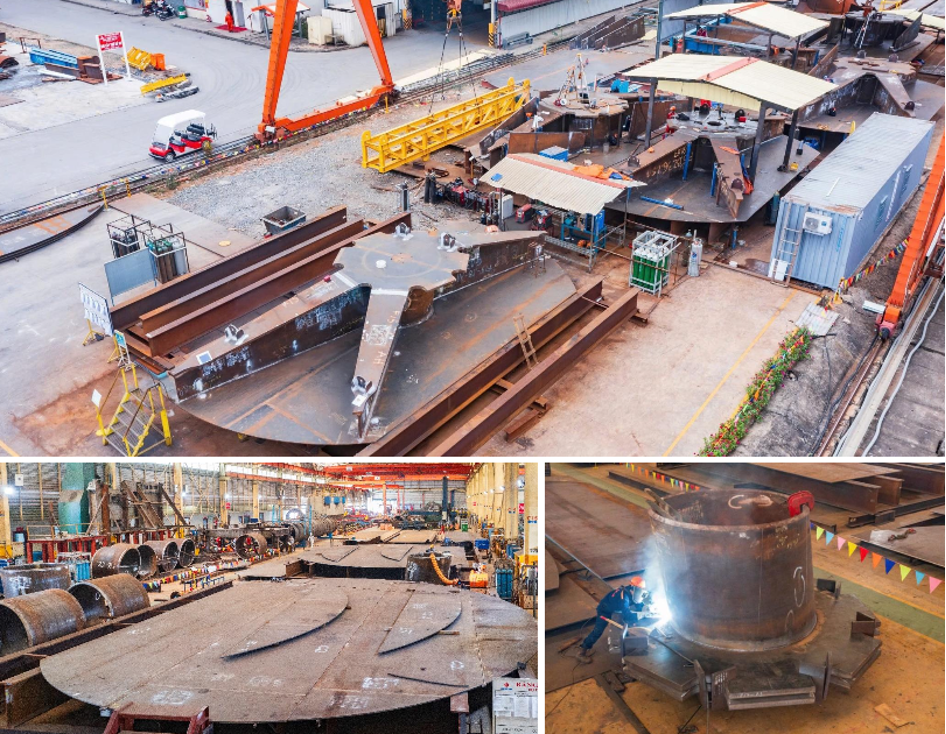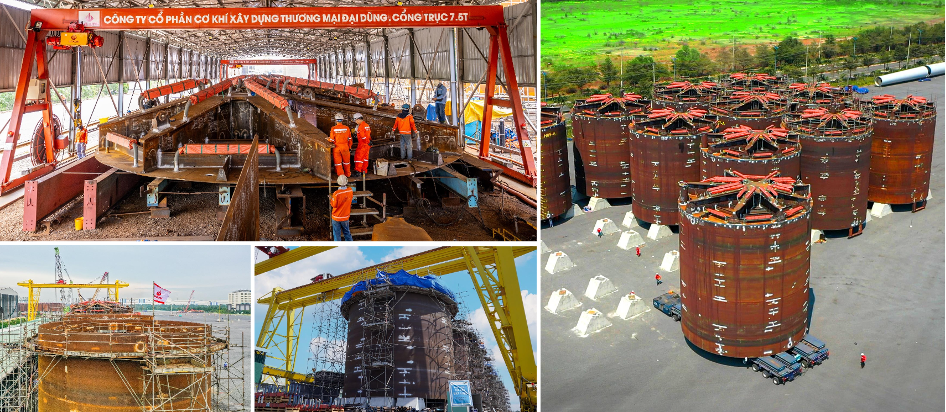The wind farm operation process is a sophisticated system focused on optimizing energy output, ensuring reliability, and reducing costs. Join DaiDung Group as we explore the full scope of wind farm operations.
An Overview of Wind Farm Operation
Wind turbines convert wind energy into electricity by capturing airflow with their blades, which creates lift and causes the rotor to spin. This rotation drives a generator, either directly or via a gearbox to produce power.
There are two main turbine types: horizontal-axis turbines (common, with three blades facing the wind) and vertical-axis turbines (omnidirectional). Turbines can be installed onshore or offshore, with offshore models typically larger to capture stronger ocean winds.
When grouped together, turbines form a wind farm, delivering large-scale renewable energy to the national grid. Smaller turbines also support residential or off-grid needs.
A complete wind farm operation process involves not only energy generation but also real-time, systematic monitoring and management to ensure reliable, efficient, and sustainable performance over time.

Systematic Wind Farm Operation Process
Wind farm operation is a complex process aimed at maximizing energy production while ensuring reliability and cost efficiency. It involves continuous monitoring, maintenance, repair coordination, grid integration, and ongoing performance optimization to sustain wind power generation over the farm’s lifespan.
- Real-Time Monitoring: Turbines are equipped with sensors sending operational data to a SCADA system for performance tracking and early fault detection.
- Maintenance: Scheduled preventive maintenance is performed regularly, alongside reactive repairs triggered by faults or warnings, minimizing downtime.
- Repair Coordination: A management system coordinates repair crews, equipment, and schedules repairs efficiently, taking weather and resource availability into account.
- Grid Integration: Power output is managed to meet grid technical standards, ensuring stability and power quality.
- Cost and Performance Tracking: Downtime, costs, and performance data are recorded to refine maintenance planning and improve operational efficiency.
- Continuous Improvement: Operational data analysis drives updates to maintenance strategies, adoption of new technologies, and overall performance enhancement.
Case study on comprehensive wind farm operation: The Greater Changhua
The Greater Changhua Offshore Wind Farm in Taiwan is a flagship example of modern wind farm operation, developed by energy company Ørsted. The first two phases, Changhua 1 and 2a (900 MW), began onshore construction in 2019 and completed offshore installation in 2024.

As part of this large-scale wind farm operation process, the project uses the Asia-Pacific variant of Siemens Gamesa’s SG 8.0-167 DD wind turbine, designed to withstand typhoons, seismic activity, and extreme temperatures. Each turbine has a rotor diameter of 167 meters and is installed using heavy-lift vessels in water depths of 30–44 meters. For cable infrastructure, over 135 kilometers of inter-array cables and 145 kilometers of export cables were laid, protected by NjordGuard systems and buried to the required depth using Van Oord’s Dig-It trencher. Two offshore substations and two onshore substations were completed in 2021 to handle power transmission using 66kV/161kV/220kV HVAC systems.
A key aspect of the wind farm operation process at Greater Changhua is its robust operation and maintenance (O&M) strategy. A dedicated service operation vessel (SOV) stationed offshore can accommodate up to 60 technicians and operate at sea for 30 consecutive days. Ørsted also inaugurated its O&M Hub in Taichung in 2022 – the largest of its kind in Asia-Pacific, further ensuring long-term maintenance efficiency.

Role of DaiDung Group in the Greater Changhua Project
DaiDung Group plays a crucial role in this landmark project by fabricating and supplying oversized steel structures for the offshore wind turbine foundations, including large suction bucket monopile foundations. Each foundation measures approximately 14 meters in diameter, 16 meters in height, and weighs up to 350 tons.
With over 30 years of experience in heavy steel fabrication and international project management, DaiDung Group ensures these components meet the rigorous technical and quality standards required for offshore environments. Our factories operate under world-class environmental certifications, enabling them to consistently deliver precision-engineered structures that withstand harsh marine conditions. This involvement in Greater Changhua exemplifies DaiDung Group’s expanding capabilities and its increasing footprint in the global renewable energy supply chain. It also showcases Vietnam’s industrial potential to participate in high-technology and large-scale infrastructure projects, contributing to the clean energy transition on a global scale.
